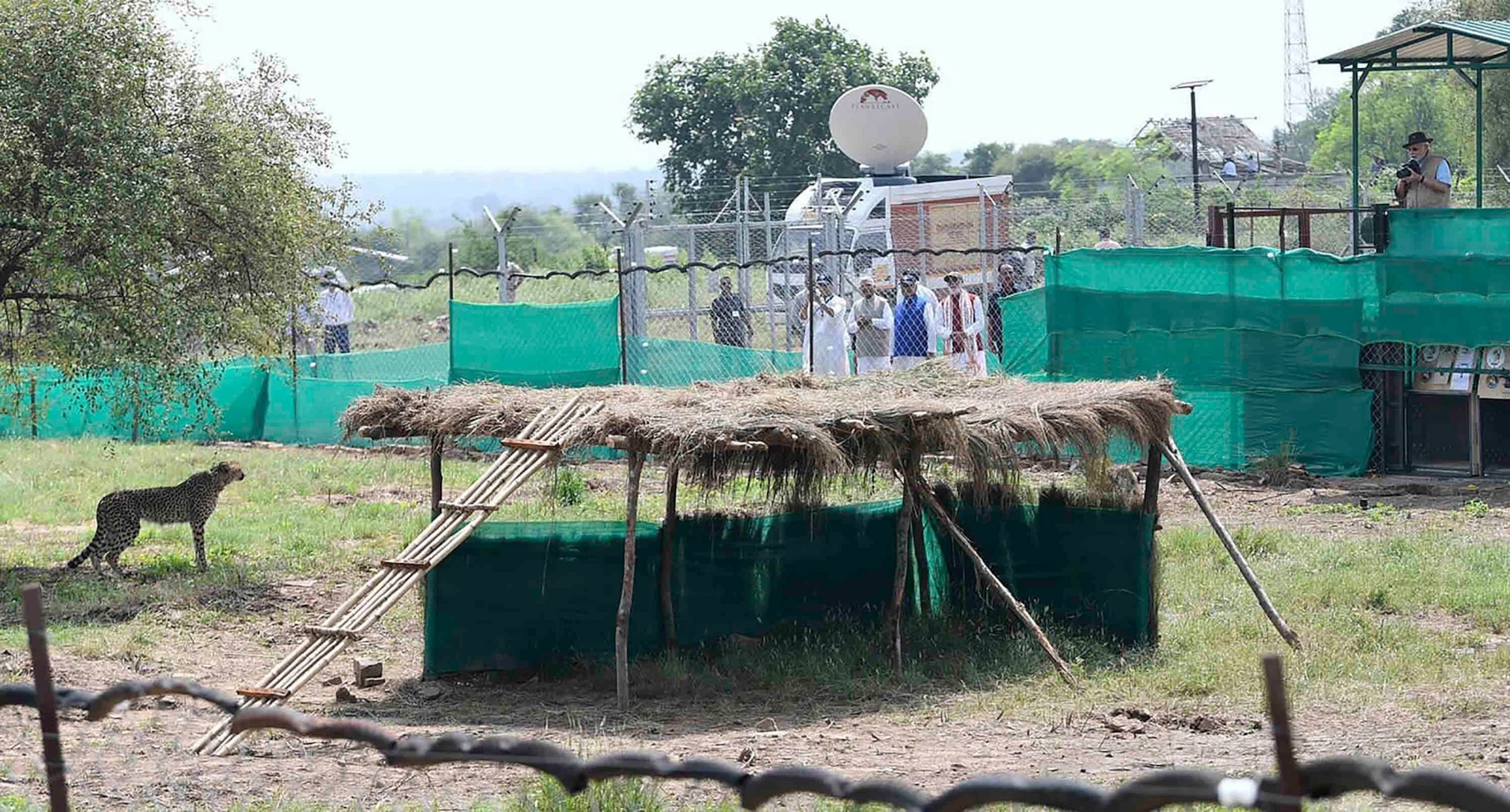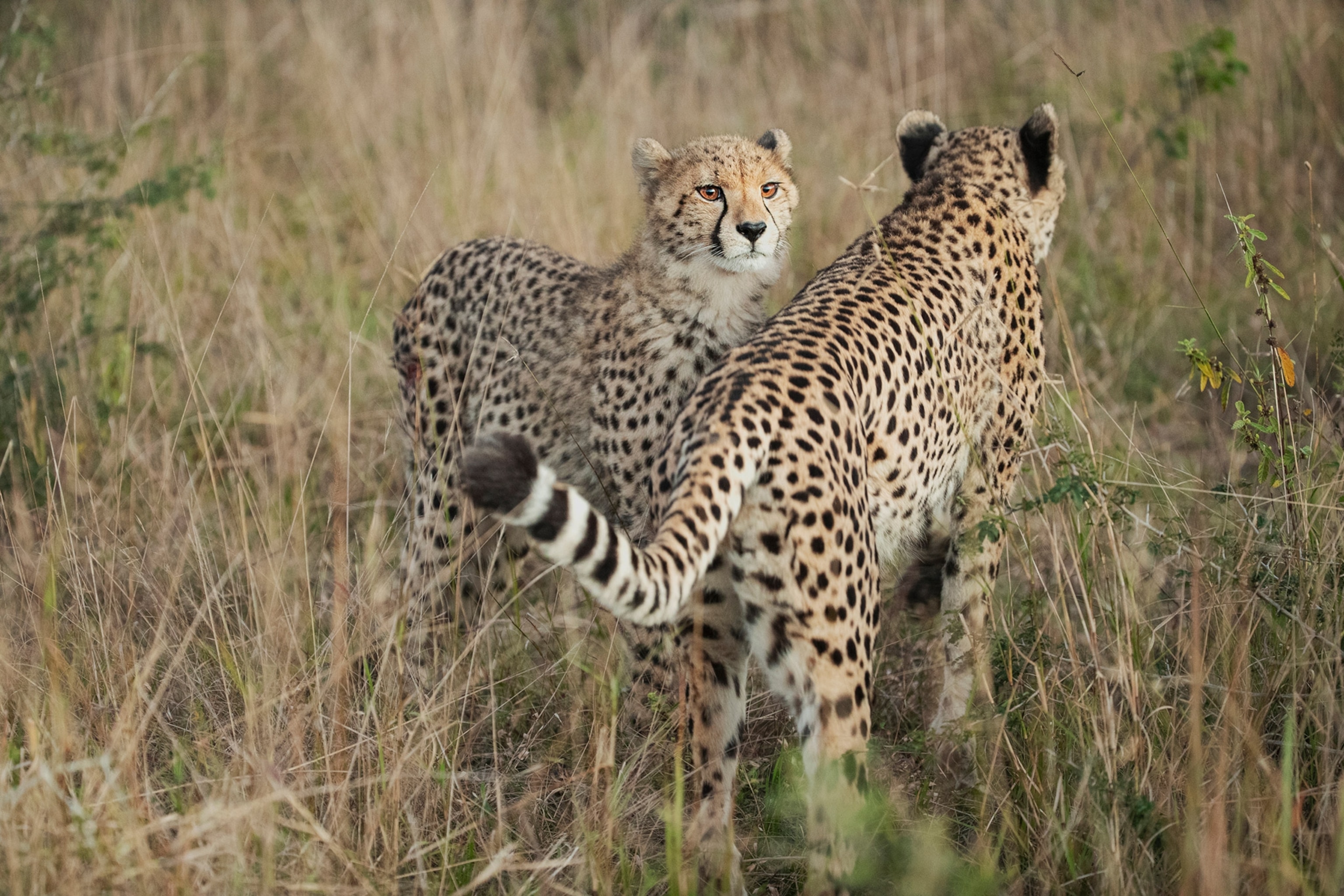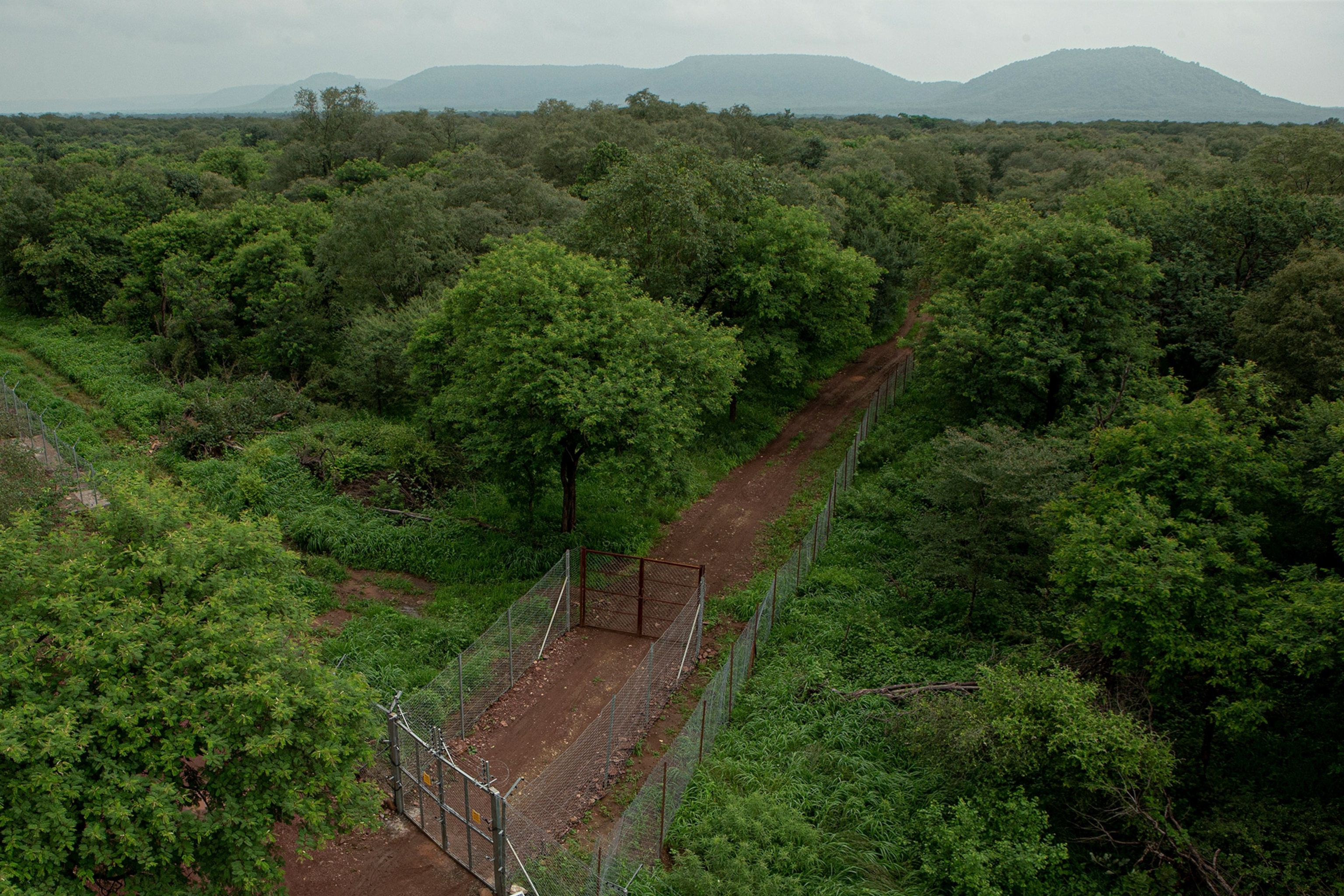
Cheetahs have come back to India. Why do they keep dying?
Some scientists say reintroducing African cheetahs to India is an “absolute disaster.” Proponents say recent losses are to be expected—and the project might still be a success.
Cheetahs are back in India after a 70-year extinction, thanks to a government-led reintroduction plan called Project Cheetah. Big cat experts are still divided over the effort, however, which has had mixed results since the first cheetahs arrived last September.
Of the original 20 animals brought from Namibia and South Africa to Kuno National Park in Madhya Pradesh State, five have died, including two last week alone. A female named Siyaya who gave birth in March also lost most of her cubs to malnutrition, dehydration, and heatstroke two months later.
Additionally, Yadvendradev Jhala, the lead scientist of Project Cheetah from 2011 to 2023, says he was forced to retire earlier this year, with no reason given. “It was my project, I designed it, so I do feel left out,” he says.
Critics say these developments do not bode well for the future of Project Cheetah or the remaining 15 African animals living in the national park. Only around 7,100 cheetahs remain in the wild today, which is why the International Union for Conservation of Nature lists the species as vulnerable to extinction. (Asiatic cheetahs, the subspecies that formerly occurred in India, only survive in a tiny population in Iran.)
Reintroducing a species into the wild is always risky, but “it’s far worse than I thought it would go—an absolute disaster,” says Ullas Karanth, emeritus director of the nonprofit Center for Wildlife Studies in Bengaluru, who was opposed from the get-go to moving African animals to India under current circumstances. “The idea that this will lead to a self-sustaining population is completely absurd.”
Yet those at the helm of Project Cheetah say that things are going according to plan.
“Cheetahs have very well adapted to the Indian habitat,” says S.P. Yadav, director of the National Tiger Conservation Authority, which oversees Project Cheetah. The animals that have been released into the park are “exploring the habitat” and “surviving in the wilderness with other co-predators,” he says.

Losses to be expected
Death and injury are inherent risks for any wild animal that is captured and moved around by people. “Reintroduction of a species that’s gone extinct is certainly not going to be an easy process,” says Laurie Marker, founder and executive director of the Cheetah Conservation Fund in Namibia, and part of the cheetah translocation team from Namibia. (See stunning photos of cheetahs in action.)
Even in South Africa, where experts have been translocating cheetahs for decades, six to seven percent of big cats that are relocated into fenced reserves die, says Van der Merwe, a South African cheetah conservationist and National Geographic Explorer. Van der Merwe, who manages the nonprofit Metapopulation Initiative, helped source the South African animals and is still involved in the project.
On March 27, Sasha, a Namibian female with pre-existing health problems, succumbed to kidney failure—marking the first death of the project. About a month later, Uday, a male from South Africa, died of unknown causes a day after being relocated out of quarantine into his 120-acre temporary enclosure.
In May, another cheetah died when officials allowed two South African males to enter the enclosure of a South African female named Daksha. Two days later, Daksha was fatally mauled by the males.
Last week, two more cheetahs, Tejas and Suraj, both males from South Africa, were also found dead. Veterinarians discovered that maggot-infested sores had developed under the cheetahs’ radio-tracking collars, causing septicemia. Two other cheetahs, Pawan and Guarav, have since been found with similar neck wounds, likely caused by the hot, wet climate.
Pawan already had his collar removed and received medical attention, says Adrian Tordiffe, a wildlife veterinarian at the University of Pretoria, who is advising the team from South Africa. The rangers are still trying to capture the Namibian coalition of males to see if they are suffering from the same issue and need treatment. "If captured and treated early, the prognosis for a rapid recovery should be good," Tordiffe says.
Siyaya’s fourth and only surviving cub was removed from her care and is being hand-raised in captivity.
From the beginning, van der Merwe and his colleagues have expected that half of the founding population of cheetahs would perish within the first year of reintroduction, so “more heartache and pain should be anticipated going forward,” he says.
He emphasizes, though, that “all is still on track, with observed mortality well within normal parameters for wild cheetah reintroduction.”

Growing pains
Indian officials calculated that Kuno National Park can support a maximum of 21 cheetahs, but some experts say this is not realistic for the territorial and wide-ranging cats.
“We’ve brought too many cheetahs too early, and we don’t have the space for them,” says Arjun Gopalaswamy, an independent conservation scientist with expertise on big cats in Africa and India. “We’re seeing evidence of that growing by the day.”
For instance, since the cheetahs were released into Kuno, rangers have had to break up a fight between a coalition of Namibian males and South African males. "What they have in Kuno is a mixed martial art tournament with cheetahs packed in at high densities and forest rangers as referees," Karanth says.
Rangers have also had to chase or tranquilize wandering cats to get them back into the park’s boundaries, including a Namibian male and female that traveled more than a hundred miles away.
According to Karanth, this isn’t a realistic path for reintroducing the species. If India wants to truly bring cheetahs back, then the animal should be allowed to naturally disperse across the landscape. “The real objective of the project is not to be a hospice for cheetahs, it is to establish a population,” he says.
Van der Merwe, however, claims “this is not a rational argument,” because animals permitted to go far afield would have no conservation value. “How will cheetahs find breeding partners if they roam [more than a hundred miles] from all the other cheetahs?” he says.
“In the future, once the population is established and there is a surplus of cheetahs, then this ranging behavior can be tolerated and even encouraged.”
To Karanth, however, "this shows complete ecological ignorance. What they are saying is cheetahs should now morph ecologically into leopards, and once the official targets are met, they should turn back into cheetahs."

The next frontier
The next step, van der Merwe says, is to expand Project Cheetah to a second location in India. The most obvious choice is Mukundara Hills National Park in Rajasthan State, a habitat that has cheetah-friendly features such as a fence and drier conditions.
But Rajasthan is currently controlled by a different political party than that of Prime Minister Narendra Modi, so, for now, it’s too complicated to consider Mukundara Hills, Karanth says. “Politics is creeping into the whole thing.”
Karanth adds the millions of dollars spent on the project could have instead gone to wildlife conservation in India. "I paid my share of taxes for this foolish scheme."
The next reintroduction site will instead probably be Ghandi Sagar Wildlife Sanctuary in Madhya Pradesh State, a smaller protected area that can only support four adult cheetahs.
Watching these developments from the sidelines, Jhala—one of the original visionaries and leader of the project—says that he would have made different decisions.
“Some of the mortality could have been avoided if proper expertise was available,” he says.
But overall, he remains optimistic. “I don’t see any reason why it should not be successful if they follow the long-term plans developed and released by the government, written by me,” he says. “More cheetahs need to come to India, and more sites need to be established.”







